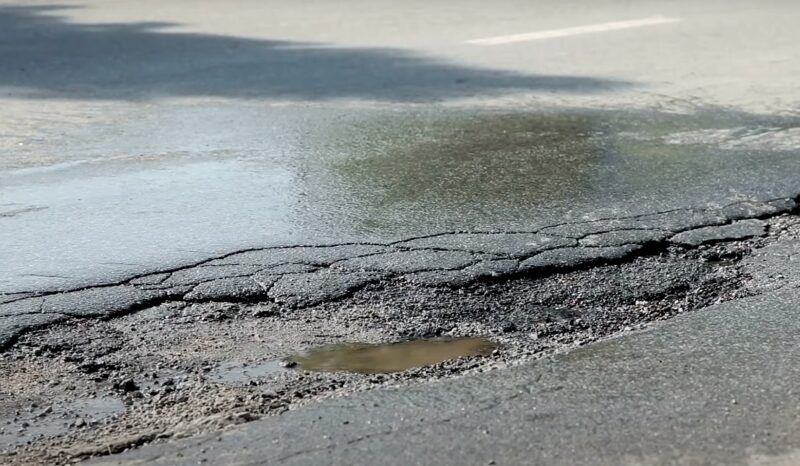The roads of the US are long 4.09 million miles in 50 states (Alaska and Hawaii included). The beating heart of this system is, of course, the nation’s 47,432 miles of Interstate Highways. That may seem like a small number, but they contribute to a full one-quarter of all traffic.
There are over 2,605,331 miles of paved road in the United States. In the past, roadways were made up of materials like gravel, cobblestone, and other naturally-sourced materials. Today, most of these surfaces have been replaced or paved over with asphalt, concrete, or some other type of pavement
According to the Federal Highway Administration (FHWA), weather acts through visibility impairments, infrastructure damage, traffic flow, and agency productivity to affect the road network.
In this article, we will explore key studies, real-life driver experiences, and essential tips for staying safe on the road during different weather conditions.
Key Takeaway
Precipitation and Fog are big problem

Weather conditions such as fog, heavy rain, and snow can seriously reduce visibility for drivers. A study by the Dutch Institute for Road Safety Research (SWOV) found that the risk of a road accident increases by 31% during precipitation and by 70% during fog.
Which region receives the highest rainfall in USA?
Where is fog most common in the US?
Did you know that in 1948 Donora (Pennsylvania) smog killed 20 people and caused respiratory problems for 6,000 of the 14,000 people. The event is commemorated by the Donora Smog Museum?
The snowiest places in The United States of America
Did you know that the town with the most snow is Valdez, Alaska, with 279.4 inches per year on average. Another stand-out is Blue Canyon, CA, with a historical average of 241.7 inches per year?
Drivers should be extra cautious during these conditions, using headlights and maintaining a safe distance from other vehicles.
| Negative Effects of Weather During Driving | Positive Effects of Weather During Driving | How to Stay Safe |
|---|---|---|
| Reduced visibility (fog, rain, snow) | Clear weather allows for better road conditions and visibility | Use headlights and maintain a safe distance from other vehicles |
| Slippery roads (rain, ice, snow) | Dry roads provide better traction and control | Reduce speed and increase following distance |
| Infrastructure damage (potholes, cracks) | Well-maintained roads improve driving experience and safety | Report road hazards to local authorities |
How Extreme weather damage to road infrastructure?

Extreme weather conditions can cause damage to road infrastructure, such as potholes, cracks, and bridge failures. According to a study by the American Meteorological Society, weather-related damages to US roads cost an estimated $5 billion annually.
Another study by the American Society of Civil Engineers (ASCE) in 2021 revealed that “43% of America’s major urban highways remain in poor or mediocre condition, and 46% of America’s bridges are in fair or poor condition”.
Freeze-thaw cycles, which occur when water seeps into pavement cracks and expands upon freezing, are a primary cause of infrastructure damage. The continuous cycle weakens the pavement structure, resulting in potholes and cracks. The Federal Highway Administration (FHWA) explains that “one freeze-thaw cycle can cause as much damage as 300 cycles of normal traffic”.
Regions with high-temperature disbalances, such as the Midwest and Northeast, are particularly susceptible to infrastructure damage. For example, Minnesota experiences some of the most extreme temperature fluctuations in the United States, with temperatures ranging from -60°F to over 100°F.
The US government invests substantial funds in repairing and maintaining roads. The ASCE’s 2021 Infrastructure Report Card estimates that the nation needs to invest $786 billion over the next ten years to address road and bridge repairs.
Opposite problem of asphalt
Asphalt has an opposite problem. Triple-digit temperatures can render it soft, experts say, while continuous traffic on an asphalt-paved road can create a “wagon trail” effect that presses tire-track depressions into a highway. Constant pressure causes cracking, which in turn leads to potholes and erosion.
Underestimating the risks
Drivers need to adjust their behavior, such as reducing speed and increasing following distance, to ensure safety on the road.
Many of them share their experiences and tips for driving in different weather conditions.
For example, after a cold spell, drivers pay close attention to potential black ice on the roads.
As John D., an experienced driver, shares on Reddit, “I always make sure to tap my brakes gently when approaching intersections or turns to test for black ice”.
Conversely, after a period of warm weather, drivers should be cautious of sudden rainfall, as it can make road surfaces slippery due to oil residue.
Summary
Did you know that weather plays a major role in shaping our driving experience?
From foggy mornings to icy winter roads, Mother Nature can throw quite a few challenges our way! By getting to know how visibility, road conditions, and traffic flow are affected, we can better navigate US roads and ensure a safer journey.
So, keep an eye on weather forecasts and plan your journey accordingly. If possible, avoid traveling during severe weather conditions or opt for alternative routes with better road conditions.

